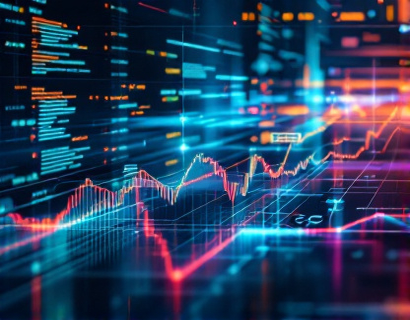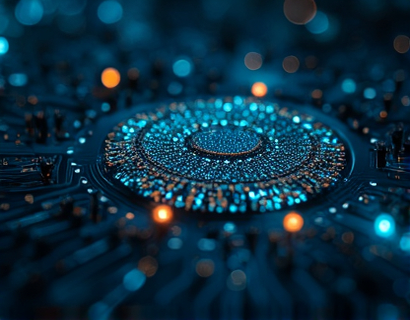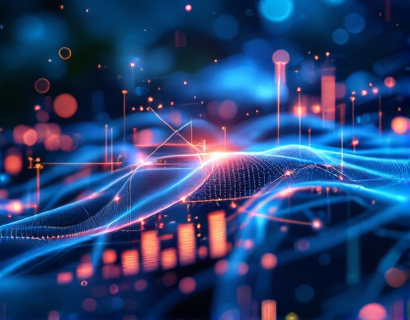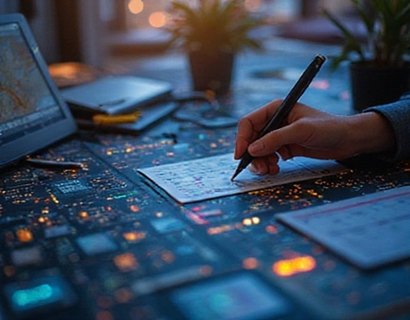Revolutionizing Productivity: The Synergy of Crypto and AI
The intersection of cryptocurrency and artificial intelligence is giving birth to a new era of productivity tools and services. This innovative fusion is not just a technological curiosity but a practical solution to enhance daily tasks and streamline workflows for individuals and businesses alike. As we delve into this exciting frontier, it's essential to understand how these technologies complement each other and what this means for the future of digital productivity.
Understanding Cryptocurrency and AI
Cryptocurrency, often associated with digital currencies like Bitcoin and Ethereum, is fundamentally a decentralized and secure form of digital money. However, its underlying technology, blockchain, offers much more than just a medium of exchange. Blockchain provides a transparent, immutable, and secure ledger that can be used for various applications beyond finance.
Artificial intelligence, on the other hand, involves the simulation of human intelligence processes by machines, particularly computer systems. These processes include learning, reasoning, and self-correction. AI can analyze vast amounts of data, recognize patterns, and make decisions with minimal human intervention. When combined, cryptocurrency and AI can create powerful tools that enhance security, efficiency, and innovation.
The Emergence of Crypto-Powered AI Solutions
The integration of AI with cryptocurrency has led to the development of advanced applications that leverage the strengths of both technologies. One of the primary areas where this synergy is evident is in the creation of decentralized applications (dApps). These applications run on blockchain networks and utilize AI to provide intelligent, automated services.
For instance, AI-driven trading bots can analyze market data in real-time, make predictions, and execute trades on decentralized exchanges. This combination ensures transparency, reduces the risk of fraud, and allows for 24/7 trading without the need for intermediaries.
Enhancing Security with AI and Crypto
Security is a paramount concern in both cryptocurrency and AI domains. The integration of these technologies can significantly enhance security measures. AI can detect and respond to anomalies and potential threats in real-time, while blockchain's immutable nature ensures that once data is recorded, it cannot be altered or deleted.
For example, AI-powered security systems can monitor blockchain transactions for suspicious activities, such as unusual patterns or unauthorized access attempts. This proactive approach to security can help prevent fraud and ensure the integrity of digital assets.
Optimizing Processes with Smart Contracts and AI
Smart contracts, self-executing contracts with the terms directly written into code, are another area where AI and cryptocurrency intersect. AI can optimize the execution of smart contracts by analyzing data, predicting outcomes, and automating complex decision-making processes.
In supply chain management, for instance, AI can track and verify the authenticity and quality of goods, while smart contracts can automatically execute payments and update records based on predefined conditions. This not only speeds up processes but also reduces the need for manual intervention and paperwork.
Personalized User Experiences through AI and Crypto
The combination of AI and cryptocurrency can also lead to more personalized and efficient user experiences. AI algorithms can analyze user behavior and preferences to recommend tailored services and applications. In a crypto-enabled ecosystem, these recommendations can be further enhanced by using decentralized identity verification and secure data sharing.
For example, a user might receive personalized financial advice based on their transaction history and investment goals. This advice can be delivered through a decentralized platform, ensuring that the data remains secure and the user maintains control over their information.
Decentralized Marketplaces and AI-Driven Discovery
Decentralized marketplaces powered by AI can revolutionize the way users discover and access digital products and services. These platforms use AI to curate and recommend high-quality applications and services, ensuring that users find what they need efficiently.
In such a marketplace, developers can list their AI-driven applications, and users can interact with these apps using cryptocurrency for transactions. The decentralized nature of these marketplaces ensures that there is no single point of failure, and the community-driven approach fosters innovation and continuous improvement.
Challenges and Considerations
While the potential of combining cryptocurrency and AI is vast, there are several challenges that need to be addressed. One of the primary concerns is regulatory compliance. The crypto space is still navigating a complex landscape of regulations, and AI applications must adhere to data privacy and security standards.
Another challenge is the technical complexity involved in integrating these technologies. Developers need to have a solid understanding of both blockchain and AI to create robust and efficient solutions. Additionally, user adoption depends on the ease of use and the perceived value of these combined technologies.
Future Prospects and Innovations
The future of productivity through the convergence of cryptocurrency and AI is promising. As technology advances, we can expect more sophisticated AI algorithms that can better leverage blockchain's unique features. For instance, the development of AI-driven oracles can provide reliable and tamper-proof data feeds to smart contracts, enhancing their functionality and reliability.
Moreover, the rise of Web3, a decentralized internet powered by blockchain, will further integrate AI and crypto, creating a seamless and secure digital experience. In this ecosystem, users will have more control over their data and digital identities, and AI will play a crucial role in managing and securing these assets.
Conclusion
The fusion of cryptocurrency and AI is not just a technological novelty but a transformative force that can redefine productivity and innovation. By leveraging the strengths of both domains, we can create a more secure, efficient, and user-centric digital environment. As we continue to explore this exciting frontier, the possibilities for enhancing our daily tasks and connecting tech enthusiasts with the latest digital innovations are endless.










































